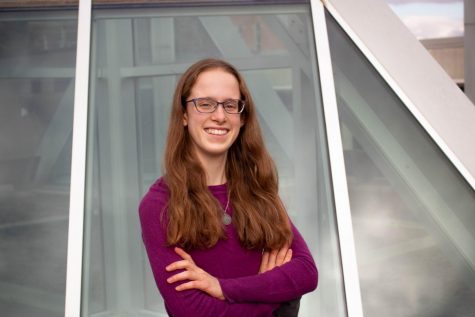Chemistry department conducts research for National Park Service
Apr 21, 2020
Students in the UNI chemistry department did underground research — literally — over spring break.
Earlier this semester, UNI chemistry and biochemistry associate professor Joshua Seebree received a $25,000 grant from the Iowa Space Grant Consortium, supported by NASA. The Department of Chemistry and Biochemistry used the funds to purchase specialized spectrometers and biosampling tools. Then, funding from the UNI Foundation allowed 11 students from the physical chemistry and biochemistry lab courses to travel to Wind Cave National Park in Hot Springs, South Dakota over spring break. Led by two professors, the students conducted research for the National Park Service using the tools purchased by the NASA grant.
“[I] had used some of those tools in [my] lab course during the semester before the trip, so it was exciting to use them in field work application,” said Tess Feldman, a junior chemistry major who went on the trip.
Feldman and her fellow students used the tools to take water samples and collect mineral and biochemical data from different parts of the cave. As part of the next step of the project, the water samples and observations collected by the students will be taken to NASA’s Jet Propulsion Lab in California. There, they will be used for experimentation in astrobiology as part of NASA’s icy moon project, since the extreme environment in Wind Cave helps scientists replicate the environments found in other regions of our solar system.
The team spent three days in Hot Springs conducting research, with two days of travel, to round out the five-day spring break trip. Each of their research days started bright and early, according to Feldman.
“On a typical day in the cave, we would all drive to Wind Cave around 8 a.m., and then unload all the gear and head to the natural entrance of the cave,” she said. “Because the elevator was broken while we were there, we had to walk in from the natural entrance, which was about a mile from where we were taking data.”
The students were divided into three research teams — the mineral team, the biochemistry team and the water testing team. Feldman was a member of the mineral team.
“Once we’d walked in, [the mineral team] would set up our equipment to take data from different parts of the cave, and the biochemistry group and water testing groups would collect water samples and set up plates,” she said. “It was a little scary, but also exciting, the first time we went down. We had guides with us, and after a while I got used to it, so it wasn’t as claustrophobic as I thought it might be.”
The environment in the cave, already a unique place to work, was made even more unusual by the fact that the COVID-19 pandemic was just beginning to rear its head in the Midwest when the students left for the trip. There were doubts that the trip would be able to happen, Feldman said, but once they arrived in Hot Springs, the nature of their work made them even more isolated than if they had been at home.
“Since we were mostly in the cave or our hotel room, we didn’t have to worry about any real interactions with others,” she said. “It did make the trip feel slightly surreal because everything was getting closed back at UNI, but we were still all working together in the cave.”
When they returned to UNI, the students re-entered a new world of online classes, campus closures and social distancing. Despite the changes to the rest of the semester, they still have work to do on the research they began in Hot Springs.
“As students in the courses that were involved, we will be doing a write up where we go through the data collected, find literature to support our research and present a finished lab report,” Feldman said.
Feldman and her fellow chemistry students were also joined by two digital media students from the UNI Department of Communication Studies. Additional funding from the College of Humanities, Arts and Sciences had been allocated to allow these students to document the trip through videos and photos, which will be compiled to create video documentaries of the trip for future presentations and exhibits.
“Having students from a different department was fun, and it was a great chance to see how other majors go about their work,” Feldman said. “It will also be nice to have the trip in videos so that we can look back on it and remember what it was like in the caves.”








